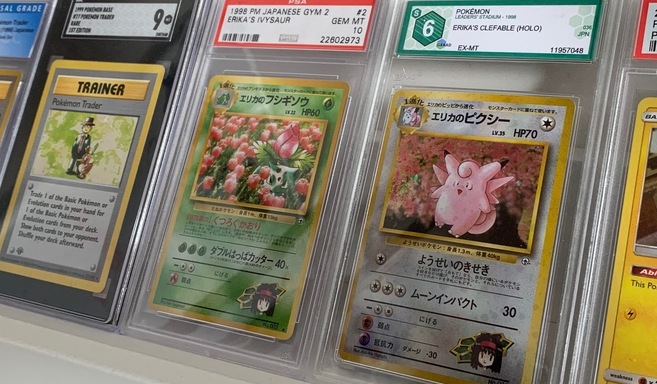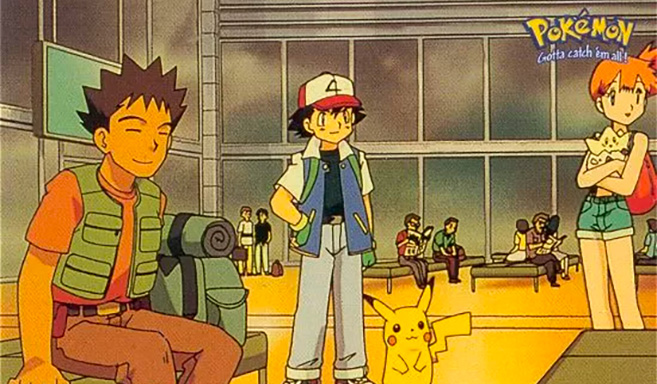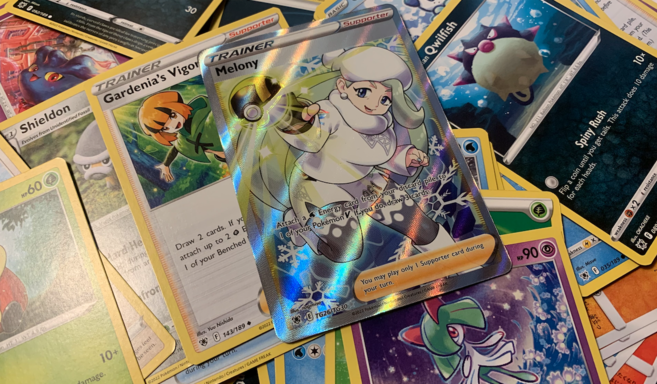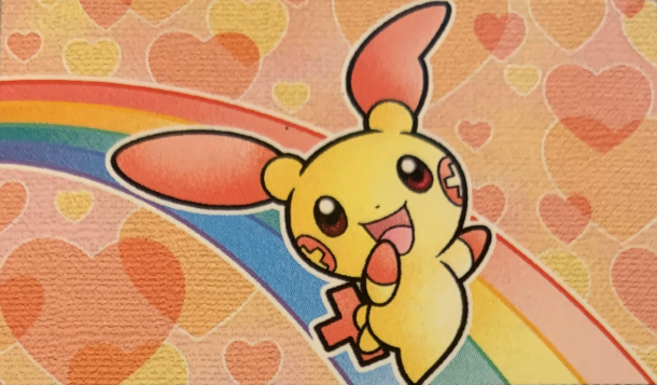Are you an avid Pokemon card collector looking to determine the value of your prized collection? Grading your Pokemon cards is a crucial step to understanding their worth and preserving their long-term value. This comprehensive guide will walk you through the process of grading your Pokemon cards, from understanding grading factors to selecting the right professional grading service. So, let’s dive in and learn how to grade your Pokemon cards!
1. Understanding Pokemon Card Grading
What is Pokemon card grading?
Card grading is a process where experts evaluate the condition and authenticity of a collectible card, such as a Pokemon card. This assessment involves examining various aspects of the card and assigning a grade based on a standardized scale.
Why is card grading important?
Grading your Pokemon cards is essential for several reasons. A higher grade can significantly increase a card’s value and desirability among collectors. Additionally, the grading process ensures that your cards are genuine and well-preserved, providing peace of mind and protecting your investment.
2. Factors Affecting Pokemon Card Grades
Card condition
The condition of a card plays a significant role in determining its grade. Grading experts assess the following aspects of a card’s condition:
Edges
The edges of a card should be crisp and clean, free from fraying or damage. Any wear or imperfections will affect the grade.
Corners
Sharp, undamaged corners are crucial for a high-grade card. Soft, rounded, or bent corners will lower the grade.
Surface
The card’s surface should be free from scratches, scuffs, or stains. Print defects, such as misaligned colors, can also impact the grade.
Centering
A well-centered card has equal borders on all sides. Off-center cards will receive a lower grade.
Authenticity
The grading process also verifies a card’s authenticity. Counterfeit cards are not graded and will be returned to the owner.
3. Professional Card Grading Services
Several reputable companies offer Pokemon card grading services. Here are three of the most popular:
PSA (Professional Sports Authenticator)
PSA is a widely recognized grading service with a long history in the collectibles industry. They use a 10-point grading scale and encapsulate
graded cards in a tamper-evident, clear plastic case to protect and display the card. It’s save to say that grading your card by PSA, always adds value to your cards.
Beckett Grading Services (BGS)
BGS is another well-established grading service known for its thorough analysis and sub-grades for centering, corners, edges, and surface. Their grading scale ranges from 1 to 10, with half-point increments. It’s common knowledge that BGS is stricter when it comes to grading. A BGS 9.5 is equivalent to a PSA 10 grade.
Certified Guaranty Company (CGC)
CGC is a newer player in the card grading market but has quickly gained a solid reputation. They offer a 10-point grading scale and encapsulation services similar to PSA and BGS. One of the advantages of CGC is that they are cheaper than PSA and BGS and still a trustworthy and valued grader.
Other Grading Companies
PSA, Beckett and CGC may be the largest grading companies, but there are dozens of others. Every grading company is trying to get a share of Pokemon TCG’s popularity. Unfortunately, there are also companies that do not take grading very seriously. You end up with Grades that do not make sense, ugly Slabs (covers) and sometimes damages cards. So don’t go for the cheapest party, but do good research. Look at how long the company has been around and read recent reviews. Besides the big 3 mentioned, SGC (Sports Grading Company), Graad (in Europe) and CardMarket Grading are good alternatives.
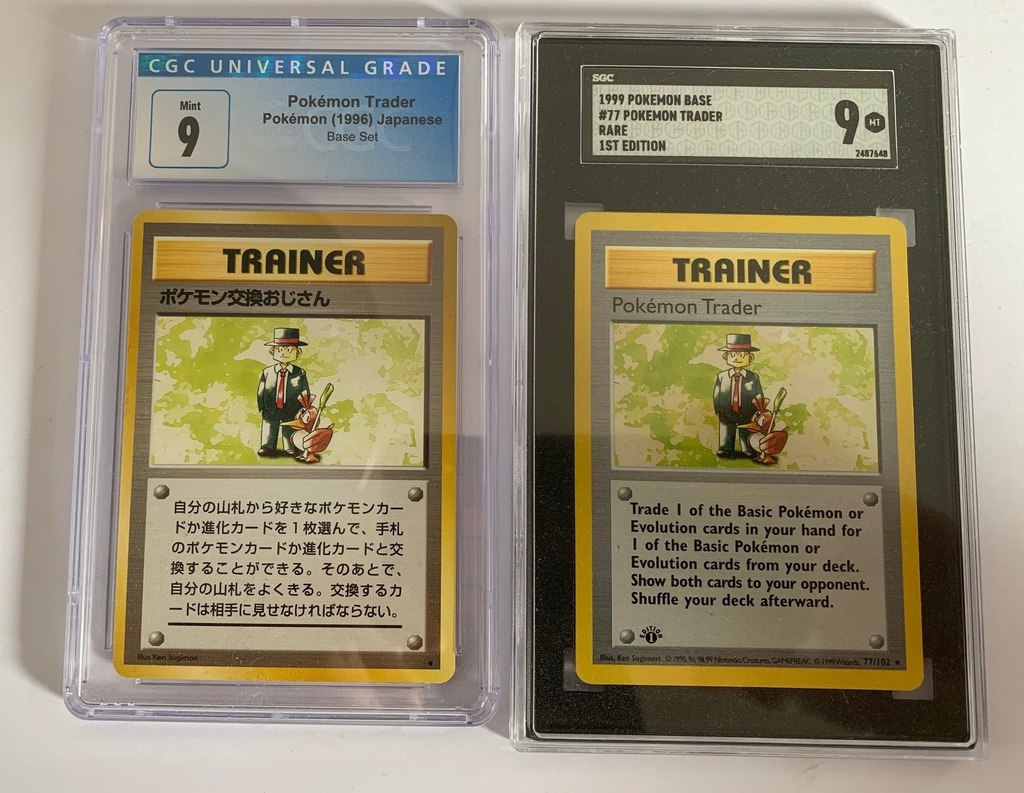
4. Preparing Your Cards for Grading
Cleaning your cards
Before submitting your cards for grading, it’s essential to clean them gently to remove any dirt or fingerprints. Use a soft, lint-free cloth to wipe the card’s surface, taking care not to damage the card in the process.
Storing and protecting your cards
Store your cards in protective sleeves or top-loaders to keep them safe from damage. The beste way is to put you card in a sleeve and that sleeve in a top-loader. Always handle cards by their edges to avoid leaving fingerprints on the card’s surface. Also, never remove staines with your finger nails, as it will leave scratches on the card for sure.
5. The Grading Process
Submitting your cards
Choose a grading service and follow their submission guidelines, which typically involve filling out a submission form, securely packaging your cards, and shipping them to the grading company. Each service will have its fees, turnaround times, and shipping requirements.
Grading scale and label
Once your cards are received, the grading company will assess their condition, assign a grade, and encapsulate the card in a protective case. The graded card will include a label displaying the card’s details and assigned grade. One of the most well-known grading scales is the PSA grading scale, which uses a scale from 1 to 10 to grade cards based on their condition. A card graded 10 is considered to be in “Gem Mint” condition, while a card graded 1 is in “Poor” condition. Cards that fall between these grades are given labels such as “Near Mint-Mint” (9), “Excellent-Mint” (6), or “Good” (3).
Another popular grading scale is the BGS (Beckett Grading Services) grading scale, which also uses a 1 to 10 scale, but includes a 9.5 as well (compared to PSA what only uses rounded numbers. BGS grades cards based on four different categories – centering, corners, edges, and surface – and assigns a separate grade to each category. The final grade is then calculated based on an average of these grades.
In addition to these grading scales, there are also several different labels that can be assigned to graded Pokemon cards. For example, some cards may be labeled as “First Edition” if they were among the first cards produced for a particular set. Others may be labeled as “Shadowless” if they lack the shadow that appears around the Pokemon image on some early cards.
It’s worth noting that different grading companies may use different grading scales and labels, so it’s important to do your research and understand the specific grading system used by the company you’re working with. Additionally, it’s important to keep in mind that graded cards may have different values depending on their grade and label, as well as factors such as rarity and demand among collectors.
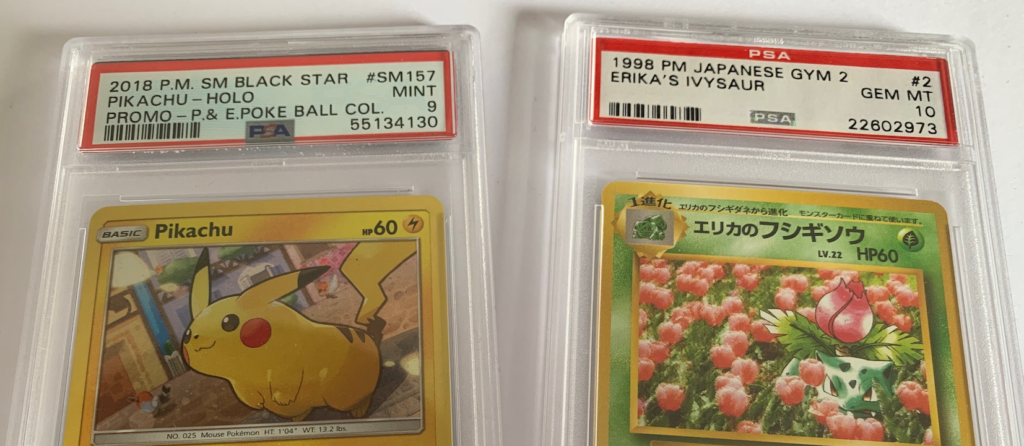
6. Interpreting the Grading Results
When you receive your graded cards, it’s crucial to understand the grading scale used by the company. Most grading services use a 10-point scale, with higher numbers indicating better condition. Familiarize yourself with the specific grading scale and criteria for your chosen service to interpret your card’s grade accurately.
7. The Impact of Grading on Card Value
A higher-grade Pokemon card is generally more valuable and sought after by collectors. Cards in “gem mint” or “pristine” condition can command significantly higher prices than lower-graded counterparts. Additionally, graded cards often sell more quickly and easily in the marketplace, as buyers have confidence in the card’s authenticity and condition.
8. Conclusion
Grading your Pokemon cards is an essential process for determining their value, ensuring their authenticity, and preserving their long-term worth. By understanding the factors that affect card grades and choosing a reputable grading service, you can maximize your cards’ potential and protect your investment. Good luck, and may your Pokemon card collection continue to flourish!
FAQ
The cost varies depending on the grading service, card value, and turnaround time. Fees can range from $20 to $200 or more per card.
Turnaround times vary by grading service and their current workload. It can take anywhere from a few weeks to several months to receive your graded cards.
While you can evaluate your cards’ condition, professional grading services provide an unbiased, expert assessment that is widely accepted by collectors and buyers.
Grading lower-value cards might not be cost-effective due to the grading fees. However, if the card holds sentimental value or has potential to increase in value over time, grading could be a worthwhile investment.
Yes, you can resubmit your card to the same or a different grading service for reevaluation. However, keep in mind that there is no guarantee the grade will change, and you will incur additional grading fees.
Pokemon card grading is a process of evaluating the condition and quality of a collectible Pokemon trading card. This process is conducted by professional grading companies, which assign a numerical grade to the card based on its condition. Grading is crucial for several reasons:Determining value: Grading establishes a card’s market value by providing an objective measure of its condition.
Ensuring authenticity: The grading process verifies that a card is genuine and not counterfeit.
Facilitating sales: Graded cards are generally easier to sell, as potential buyers have a clear understanding of the card’s quality.


